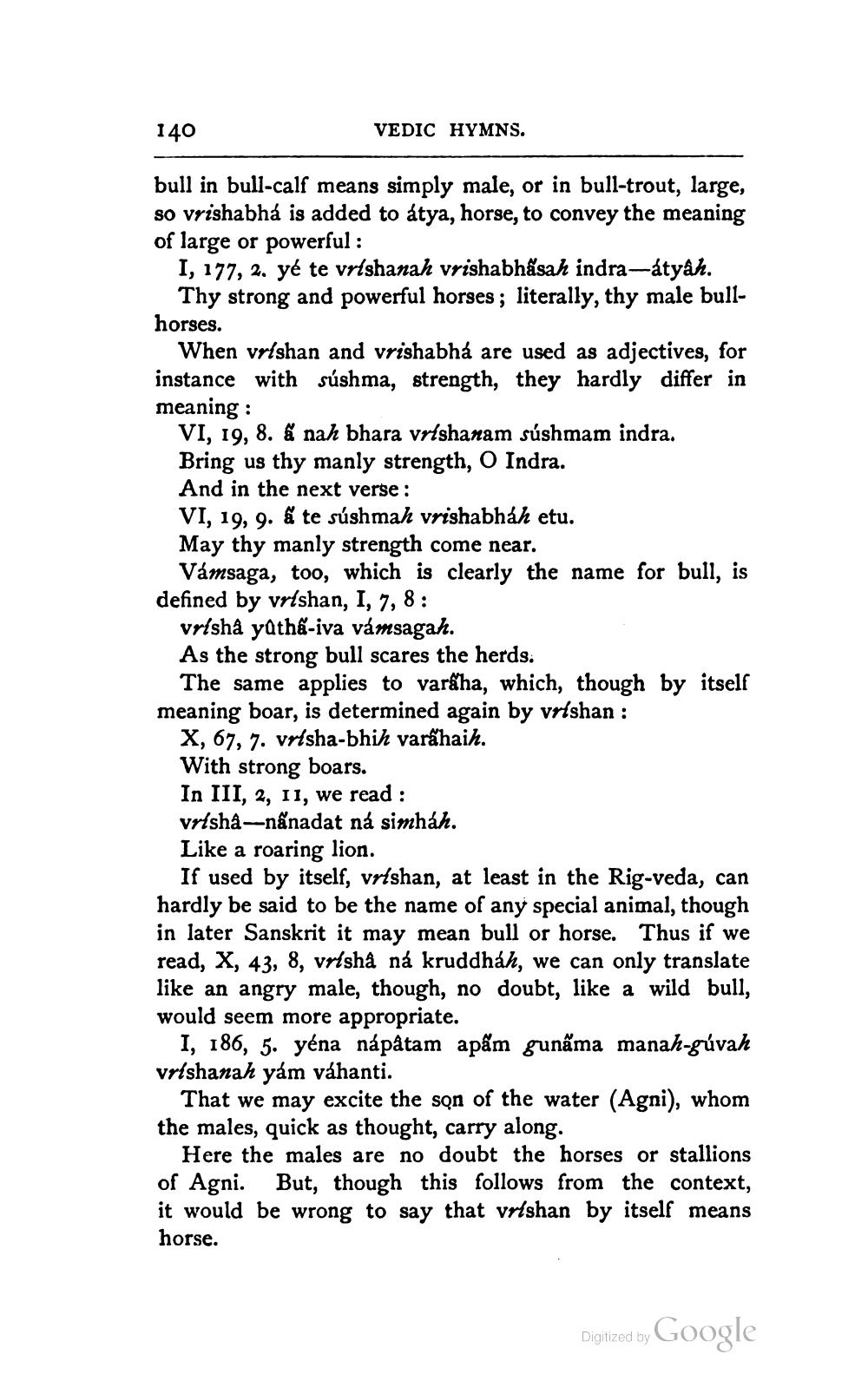________________
140
VEDIC HYMNS.
bull in bull-calf means simply male, or in bull-trout, large, so vrishabhá is added to átya, horse, to convey the meaning of large or powerful :
I, 177, 2. yé te vrlshanah vrishabhásah indra-átyâh.
Thy strong and powerful horses; literally, thy male bullhorses.
When vrlshan and vrishabhá are used as adjectives, for instance with súshma, strength, they hardly differ in meaning :
VI, 19, 8. a nah bhara vrlshanam súshmam indra. Bring us thy manly strength, O Indra. And in the next verse: VI, 19, 9. & te súshmah vrishabháh etu. May thy manly strength come near.
Vamsaga, too, which is clearly the name for bull, is defined by vrlshan, I, 7, 8:
vrlsha yatha-iva vamsagah. As the strong bull scares the herds.
The same applies to varáha, which, though by itself meaning boar, is determined again by vrlshan :
X, 67, 7. vrlsha-bhih varãhaih. With strong boars. In III, 2, 11, we read : vrlsha---nânadat ná simháh. Like a roaring lion.
If used by itself, vrlshan, at least in the Rig-veda, can hardly be said to be the name of any special animal, though in later Sanskrit it may mean bull or horse. Thus if we read, X, 43, 8, vrlshå ná kruddháh, we can only translate like an angry male, though, no doubt, like a wild bull, would seem more appropriate.
I, 186, 5. yéna nápåtam apám gunấma manah-gúvah vrlshanah yám váhanti.
That we may excite the son of the water (Agni), whom the males, quick as thought, carry along.
Here the males are no doubt the horses or stallions of Agni. But, though this follows from the context, it would be wrong to say that vrlshan by itself means horse.
Digitized by
Digitized by Google




